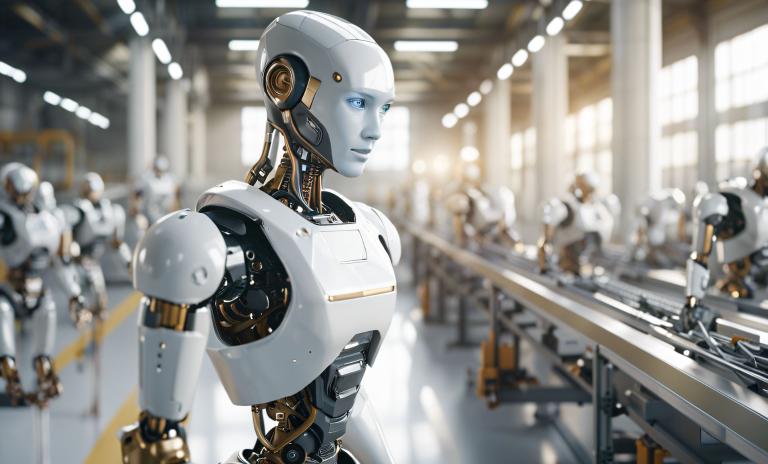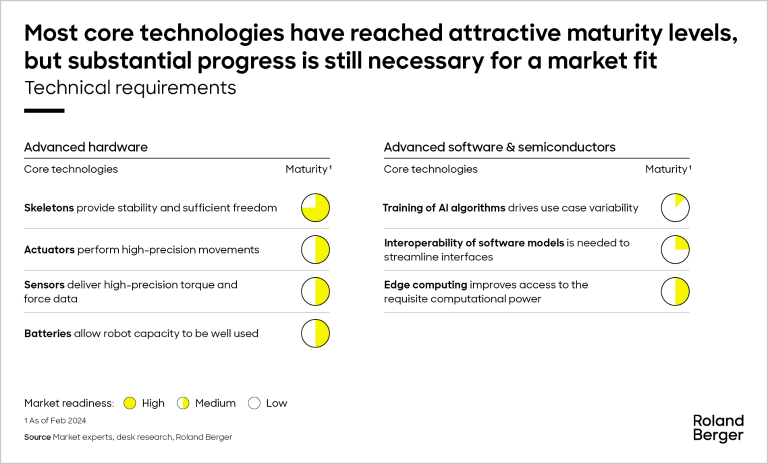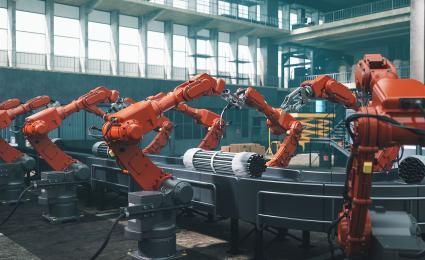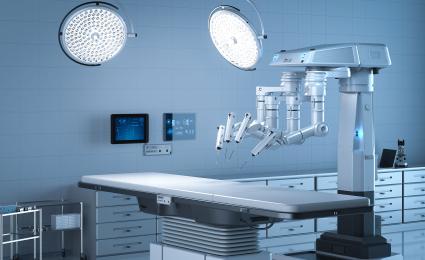Intelligent automation – a blend of robotic process automation and artificial intelligence solutions – can deliver huge efficiency gains, fast.


Humanoid robots: From science fiction to reality
How to participate in the potential revolution
Humanoid robots are no longer consigned solely to the realms of fantasy. They could soon become ubiquitous reality, transforming a broad spread of industries and markets and yielding extremely lucrative revenues. But is this scenario realistic?

With technological advances having brought this possibility sharply into view, Roland Berger has taken a deep dive into the market for humanoid robots, examining its key drivers, discussing possible developments and explaining the challenges ahead.
"Humanoid robots need AI and machine learning to emulate human cognitive skills. Current models excel at tasks like navigation and facial recognition, but advanced software like generative AI is crucial to overcome limitations and unlock their full capabilities."
The problem is there – But where is the solution?
The main motivation for developing humanoid robots is to address the global labor shortages and productivity challenges that many countries and sectors are facing in the decades ahead. According to our analysis, the European working-age population will decline by 10% between now and 2050. At the same time, demand for manual labor will increase due to the regionalization of supply chains, persistent inflation and limited productivity gains.
Humanoid robots could fill some of this gap by raising productivity, improving output quality and collaborating seamlessly with human workers. They could also revolutionize a host of industries, creating new value propositions and business models in the process. For example, humanoid robots could perform tasks that are too dangerous, repetitive or complex for humans. They could also provide services – such as care giving, personal assistance and education – that require human-like interaction.
Niche market or multi-trillion-dollar bonanza?
In an ambitious scenario, universally usable humanoid robots would be rapidly developed between now and 2030. If the industry scales up accordingly, we believe that 50 million humanoid robots by the year 2050 could be generating an annual revenue of USD 1.5 trillion. However, this scenario is heavily dependent on technological progress and the regulatory environment around humanoid robots. Currently, most such robots are still at the prototype stage and face several further challenges: Issues such as high development costs, technical complexity and regulatory uncertainty must all be resolved before the industry can genuinely take-off – and to avoid the threat of petering out into a far more modest niche market.
"As the humanoid robot industry burgeons, OEMs need robust sourcing networks, while industrial players should leverage their strengths to support growth. Collaboration between OEMs and motion control/industrial robot companies will be essential."
Technological challenges and constraints
While acknowledging the impressive advances that have already been made in core technologies, the Roland Berger study also highlights the need for more key breakthroughs if humanoid robots are to become widely accepted and firmly established. As eye-catching as their party tricks may be, their actual industrial uses remain severely limited at the present time.
Importantly, these robots are not just machines: They are the hardware embodiment of artificial intelligence. As such, they require the seamless integration of advanced hardware and software components. They must also learn constantly and be able to adapt to unpredictable situations. Humanoid robots thus still face key challenges in terms of reliable and predictable motion, rapid reactivity and unambiguous communications.
To overcome these and other challenges, humanoid robot developers need to master a daunting array of core technologies around skeletons, actuators, sensors, batteries, AI algorithms, software models, edge computing and cloud computing. Most of these technologies have already reached attractive maturity levels. Here again, however, much further progress is still necessary to achieve market fit. Moreover, it is vital to streamline and optimize the interplay and interoperability of all these technologies.
The market landscape
The new Roland Berger study documents the diversity, dynamism and geographic focus of the humanoid robot landscape today. The leading players in the field of humanoid robotics – based mainly in the US, Europe and Asia – are those that innovate swiftly based on short development cycles. They invest heavily in research and development and are committed to developing more capable, versatile and user-friendly robots. Now, however, they must also confront the challenge of quickly scaling production to meet projected market demand.
While most players are vertically integrated start-ups in the current constellation, a new industry structure is likely to emerge as the market grows and the technology matures. Within this structure, humanoid robot players will also need cross-functional and collaborative teams, internal software development, access to very sizable computing power and access to the necessary funding.
The road ahead for industrial companies?
For established industrial companies such as motion control players, the humanoid robot market presents both huge opportunities and potential threats. Humanoid robots may soon lead the motion control market, offering new alternatives to current robot setups. The study therefore concludes with practical recommendations for enterprises that want to play a part in shaping the market for humanoid robots and reaping the benefits. To seize the opportunities and ward off the threats, industrial companies must swiftly map out their strategies and shift into action without delay. They need to establish partnerships with leading humanoid robot players, provide development support and position themselves as preferred component suppliers. They also need to invest in their own R&D capabilities and production capacity to keep up with technological progress and market demand.
Register now to access the full study, to learn more about the principal drivers of the market for Humanoid Robots.













